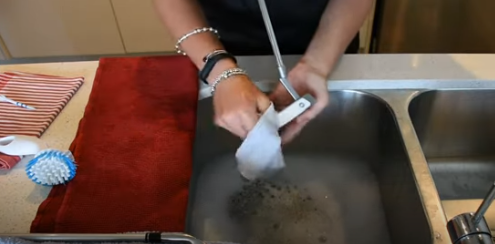What is a fairway in golf?
So, what is a fairway in golf? This is one of the most asked questions in the game of golf, especially from people who are just getting into the game.
The game of golf is a rich tapestry of greens, bunkers, hazards, tees, and one of the most integral parts of any golf course, the fairway. In this article, we will take an enlightening journey exploring the fairway in golf.
fairway in Golf – Introduction.

A fairway is a term used in golf to describe the short-cut grassy area between the tee box and the green. It is the ideal landing spot for golfers to hit their tee shots, as it provides a clear path to the green and allows for easier approach shots.
Fairways are typically mowed shorter than the rough and are well-maintained to provide a consistent playing surface for golfers.
The width of a fairway can vary depending on the course and the hole, but it is generally wider than the landing area of the green and narrower than the rough.
Golfers aim to hit their tee shots onto the fairway to avoid the hazards and obstacles that may be present on the course, such as bunkers, water hazards, and trees.
A successful tee shot onto the fairway can set up a golfer for a good score on the hole, while a missed fairway can lead to a difficult recovery shot and potentially a higher score.
What is a fairway?
In golf, a fairway is essentially the pathway between the teeing ground and the green. This section of the course is typically covered with short grass, making it the most advantageous area for golfers to land their balls.
The fairway is usually located in the center of the hole and is the most direct route to the green, where the hole or “cup” is located. The term “fairway” refers to the fair and favorable conditions it provides for golfers to hit their balls.
While the fairway is the ideal place for golfers to land their balls after a shot from the tee box, it is also often strategically surrounded by various hazards, such as rough, bunkers, or water, which golfers must avoid.
In terms of its surface, the fairway is meticulously maintained. The grass is cut short and even, making it easier for golfers to hit the ball cleanly. This is in contrast to the rough, where the grass is left longer and can make shots more difficult.
It’s important to note that the fairway’s width and length can vary significantly from course to course and hole to hole. Factors influencing its design include the overall difficulty of the course, the specific hole’s par (expected number of shots), and the surrounding landscape.
Understanding and navigating the fairway effectively is a crucial part of golf strategy. Golfers must consider their position on the fairway for each shot, taking into account distance, angle, and the specific characteristics of the hole they’re playing.
So, to sum up, a fairway in golf is a central pathway on each hole, covered in short grass, offering the most straightforward route from the tee box to the green. Mastering fairway play is an essential part of becoming a successful golfer.
What is the purpose of a fairway?
The purpose of a fairway is to provide a clear and defined path for golfers to hit their ball toward the green.
It allows golfers to have a better chance of hitting their ball accurately and consistently, as it provides a smooth and level surface to play from. The fairway also helps to prevent the ball from bouncing or rolling too far off course, which can result in a lost ball or a penalty stroke.
In addition to providing a clear path for golfers, the fairway also serves as a strategic element of the golf course.
The placement and design of the fairway can influence a golfer’s decision-making and shot selection, as they may need to consider the hazards and obstacles that are present along the fairway.
For example, a golfer may need to decide whether to play it safe and aim for the center of the fairway, or take a riskier shot and try to carry the ball over a bunker or water hazard.
Overall, the fairway is an essential part of any golf course, as it provides a clear and defined path for golfers to hit their ball toward the green, while also serving as a strategic element that can influence a golfer’s decision-making and shot selection.
Features/characteristics.
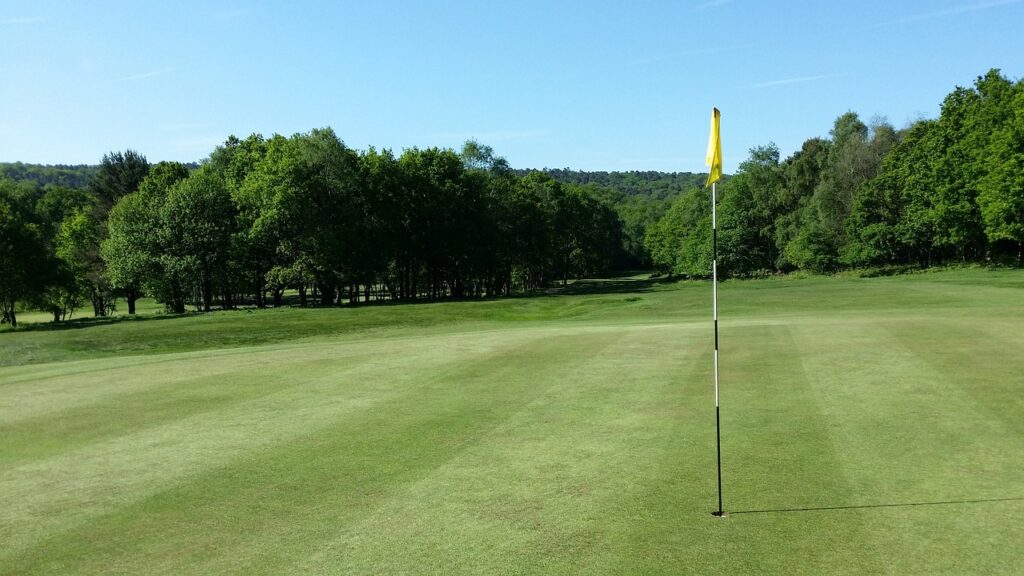
Fairways are one of the most important parts of a golf course. They are the areas of the course where golfers hit their tee shots and approach shots.
A well-maintained fairway can provide golfers with a good playing experience, while a poorly-maintained fairway can make the game more difficult and less enjoyable.
The characteristics of a fairway in golf largely determine the playability of a hole and vary from course to course. Here are some notable features:
Contouring and Sloping.
Fairways aren’t always flat. They often feature slopes, undulations, and tiers that can affect the roll and final position of the ball. Understanding these elements is key to strategic play.
Width and Length.
The width of fairways can vary widely. Some might be narrow and challenging, requiring precision from the tee, while others might be broad, allowing for some error in the shot.
The length of a fairway corresponds with the length of the hole. It can range from short par-3 holes, where the tee shot aims to land on the green, to long par-5 holes that demand multiple well-placed shots to reach the green.
Grass Type.
The type of grass used on a fairway can also affect the playing experience. There are several types of grass that can be used on a fairway, including Bermuda grass, bentgrass, and fescue.
Bermuda grass is commonly used in warmer climates, while bentgrass is commonly used in cooler climates. Fescue is often used in areas with poor soil conditions. The type of grass used can affect the speed and consistency of the ball roll.
Hazards
Hazards can also be found on fairways, including bunkers, water hazards, and rough. Bunkers are areas of sand that can make it difficult to hit a shot. Water hazards are areas of water that can cause golfers to lose their ball.
Rough is the area of grass that is longer than the fairway and can make it more difficult to hit a shot. Hazards can add to the challenge of the game and require golfers to use different strategies to navigate the course.
Fairway Markers:
Fairways typically include markers (often colored stakes or disks) to indicate distances to the green. These help golfers choose the appropriate club for their next shot.
Strategy for the Fairway
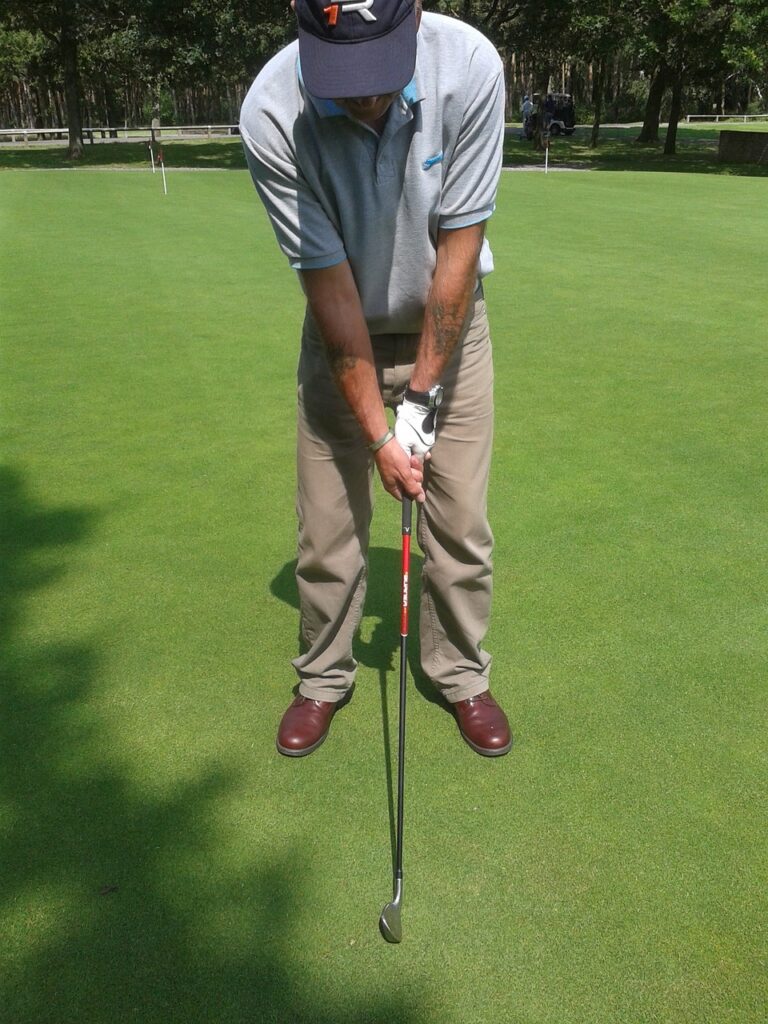
Understanding and applying effective strategies for the fairway is critical to scoring well in golf. Here are some strategies that golfers often use:
1. Target Selection: Aiming for the widest part of the fairway often increases your chances of a favorable lie for the next shot. Remember, being on the fairway is often more important than gaining extra distance.
2. Club Selection: Choosing the right club for your tee shot is essential. If accuracy is more important than distance for a particular hole, it might be wise to use a fairway wood or an iron off the tee instead of a driver.
3. Shot Shaping: Being able to shape your shots (hit draws or fades) can significantly increase your chances of hitting the fairway, especially on dogleg holes. A well-executed draw or fade can follow the contour of the hole and increase your chances of staying on the fairway.
4. Accounting for Slopes and Wind: Take note of the fairway’s slope and the day’s wind conditions. You might need to aim to one side of the fairway to allow for the slope or the wind to bring the ball back to the center.
5. Course Management: Understanding the hole layout is crucial. If there’s a hazard splitting the fairway, it might be better to lay up short with a lesser club than to try and carry the hazard, especially if the risk outweighs the reward.
6. Practice Positional Play: Sometimes, it’s not about how far you can hit, but where you place the ball on the fairway to set up your next shot. Knowing the best angles of approach to the green can drastically improve your chances of getting close to the pin.
Remember, golf is a game of strategy just as much as it is a game of skill. Incorporating these strategies into your game can help you navigate fairways more effectively and improve your overall score.
To sum it all up, the characteristics of the fairway significantly influence how a hole is played. Golfers must navigate these features strategically to make the most of their rounds.
Common Mistakes on the Fairway.
While playing on the fairway seems straightforward, many golfers, especially beginners, can make common mistakes that affect their scores. Here are some of those mistakes:
Choosing the Wrong Club: Often, players choose a club based on the maximum distance they can hit with it, not considering the actual distance needed for the shot. This can result in overshooting or undershooting the green.
Ignoring Wind and Slope: Golfers sometimes fail to account for wind direction and speed, as well as the slope of the fairway. Both factors can significantly affect the ball’s trajectory and final landing spot.
Aiming for the Flag Regardless of Pin Position: The position of the pin on the green can greatly influence the difficulty of the approach shot. Aiming for the flag when it’s located near a hazard or the edge of the green can lead to costly mistakes. Sometimes it’s better to aim for the center of the green.
Neglecting Course Management: Not every shot on the fairway should be hit as far as possible. On holes with hazards or doglegs, it can often be wise to play a shorter shot to a safer location, setting up an easier next shot.
Poor Swing Technique: Many golfers try to hit the ball too hard, resulting in poor contact and inaccurate shots. A smooth, controlled swing often leads to better results.
Lack of Practice from Different Lies: The fairway isn’t always perfectly flat. If a golfer hasn’t practiced hitting from uneven lies (ball above feet, ball below feet, uphill, downhill), they may struggle when faced with these situations on the course.
Not Planning Ahead: Golfers often don’t think about the best place to leave the ball for their next shot. Good players always consider their upcoming shots when deciding where to aim on the fairway.
Avoiding these common mistakes can significantly improve a golfer’s performance on the fairway and overall scoring in the game of golf.
How to Improve Your Fairway Play.
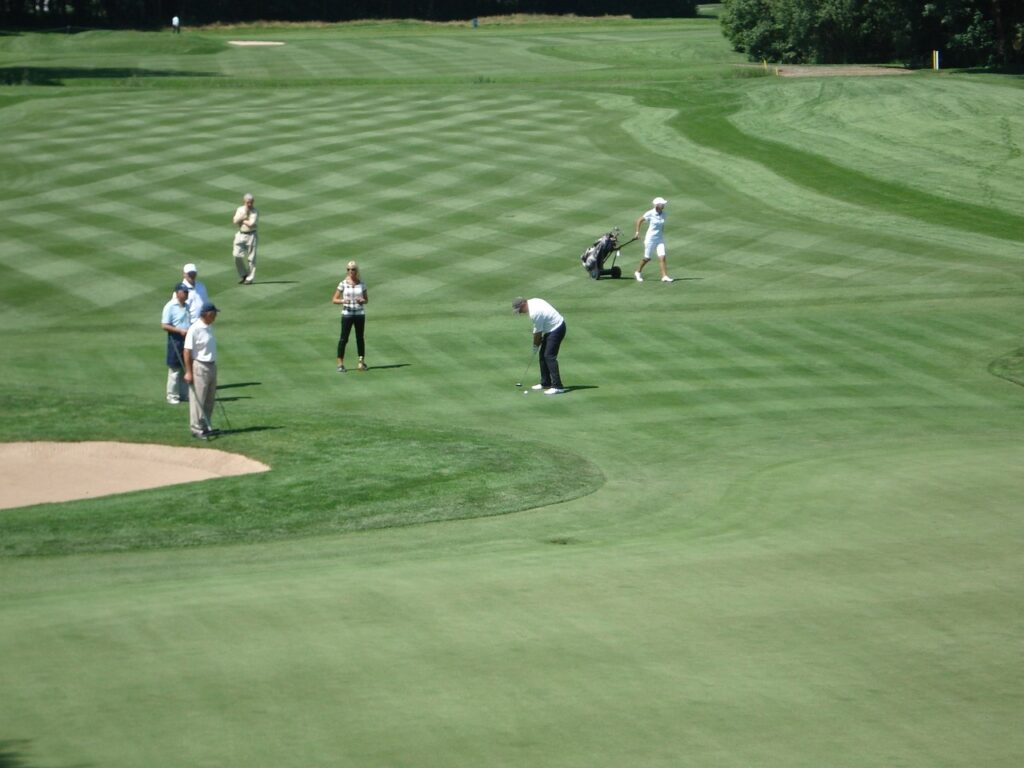
Improving your fairway play is key to lowering your golf scores. Here are several strategies to enhance your performance on the fairway:
Equipment Selection: Choosing the right club for the shot at hand is crucial. Understand the distance each of your clubs can achieve and select the one that best fits the situation.
Remember, it’s not always about hitting the ball as far as possible – sometimes, strategy requires a shorter, more controlled shot.
Improve Your Swing: A good swing is foundational to successful fairway play. Work on creating a consistent, repeatable swing. This includes focusing on proper grip, stance, and follow-through. Taking lessons from a professional can be particularly beneficial.
Practice Different Lies: The fairway isn’t always flat. Practice hitting the ball from a variety of lies – uphill, downhill, and sidehill (ball above or below your feet). This can prepare you for a variety of situations on the course.
Develop Course Management Skills: Understand the layout of the hole you’re playing and make strategic decisions. This includes considering wind and slope, hazards, and the location of the pin on the green.
Control Your Shot Shape: Learning to shape your shots – intentionally curving the ball right or left – can provide a significant advantage, especially on dogleg holes or when the wind is a factor.
Mental Approach: Keep a positive mindset, stay focused, and don’t let a bad shot ruin the rest of the hole or round. Mental toughness is a significant aspect of golf, often just as important as physical skill.
Regular Practice: The more you play, the more comfortable you’ll become on the fairway. Regular practice allows you to experiment with different shots and learn from both successes and mistakes.
Pro Tips for Mastering the Fairway.
Mastering the fairway is essential for any golfer looking to improve their game. Here are some professional tips to help you navigate the fairway with ease:
Focus on Accuracy Over Distance: While it can be tempting to try to achieve the longest drive possible, accuracy is often more crucial in the long run. A well-aimed shot that lands on the fairway can set you up for success better than a longer drive that ends up in the rough or a bunker.
Understand the Course Layout: Knowing the layout of the course can help you strategize your shots better. Pay attention to the location of hazards, the slope of the fairway, and the position of the pin on the green.
Practice Different Shots: Don’t just practice one type of shot. Vary your practice to include draws, fades, punches, and other shot types. This versatility will equip you with the right tools for whatever situation you encounter on the course.
Club Selection: Make sure you’re using the right club for each shot. This includes not only understanding how far you can hit with each club but also considering factors like wind conditions and risk/reward scenarios.
Think One Shot Ahead: Always have a plan for your next shot. Consider where you want your ball to end up after each stroke to set yourself up for success on the next one.
Fine-Tune Your Short Game: Being able to land the ball close to the pin on your approach shot will drastically reduce your scores. Spend significant time practicing your wedges and understanding how to control your distance and trajectory.
Mental Strategy: Stay calm and composed, even when things don’t go as planned. Keeping a level head can help you make smarter decisions and recover from tough situations.
Applying these professional tips to your fairway play can significantly enhance your performance on the golf course, leading to lower scores and more satisfying rounds of golf.
The Fairway in Major Tournaments.
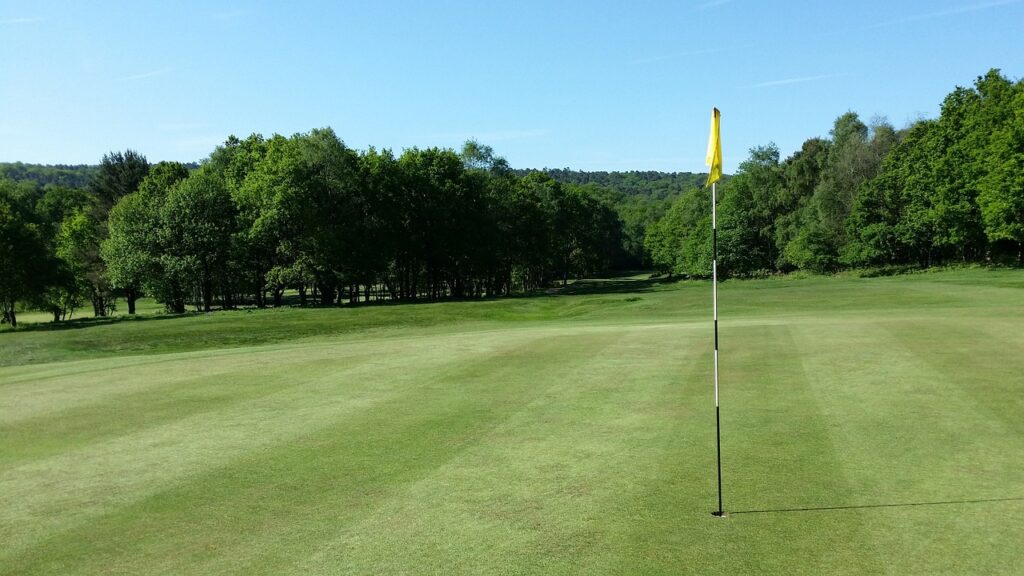
The fairway plays a critical role in major golf tournaments, presenting both opportunities and challenges to the world’s best golfers. Here’s a look at its significance:
Precision and Challenge: In major tournaments, fairways are often narrower and surrounded by more hazards, making them harder to hit consistently. This puts a premium on accuracy off the tee.
Course Conditioning: The condition of the fairways can drastically impact a tournament. Factors like grass type, mowing patterns, and weather conditions can influence the roll of the ball and subsequently, the players’ strategy.
Uneven Lies: Major tournament courses often feature undulating fairways that can lead to tricky, uneven lies. How well a player handles these situations can greatly affect their score.
Risk vs Reward: Strategic course design often presents players with risk-versus-reward decisions. For example, a player might have the option to attempt a difficult shot to a narrow section of the fairway, providing a better angle for the next shot, or play conservatively to a wider area, reducing the risk but making the next shot more challenging.
Impact on Club Selection: Depending on the layout and condition of the fairway, players might choose to use less than a driver off the tee to ensure they hit the fairway. This is especially common when the fairway is fast and firm, increasing the chances of the ball rolling into the rough or a hazard.
Impact on Scoring: Ultimately, performance on the fairway is usually a key factor in a player’s tournament success. The ability to consistently hit the fairway off the tee and accurately approach the green from the fairway can significantly lower a player’s score.
By and large, the fairway in major golf tournaments can often be a decisive factor, and the world’s best players must excel in their fairway play to have a shot at the title.
Famous Fairways.

There are numerous famous fairways around the world that are renowned for their design, challenge, and historical significance in the sport of golf. Here are a few:
1. Old Course at St. Andrews – Hole 18: Known as the “Home Hole,” the 18th at St. Andrews is arguably the most famous fairway in golf. The fairway is shared with the 1st hole, and the approach to the green requires navigating the iconic Swilcan Bridge.
2. Augusta National Golf Club – Hole 13: This is the final hole of Amen Corner, and it’s a beautiful dogleg left par-5. The fairway is narrow and guarded by a tributary to Rae’s Creek, making for a challenging but memorable hole.
3. Pebble Beach Golf Links – Hole 18: This is widely regarded as one of the greatest closing holes in golf. This par-5 runs along the rugged coastline of the Pacific Ocean, making the fairway an unforgettable sight.
4. Royal County Down Golf Club – Hole 9: Located in Northern Ireland, this par-4 hole features a blind tee shot over large dunes to a rolling fairway. The backdrop of the Mountains of Mourne makes it one of the most picturesque fairways in the world.
5. Oakmont Country Club – Hole 3: This par-4 hole features the famous “Church Pews” bunker, which is bordered by the 3rd and 4th fairways. Navigating this intimidating hazard is a significant challenge for any golfer.
6. Muirfield – Hole 13: This par-3 features a diagonal ridge running across the fairway, making it an iconic and challenging hole. It has been praised for its demanding yet fair design.
These fairways are not only beautiful and challenging but they also have a rich history of incredible golf and have been the site of numerous memorable moments in the sport.
The Future of Fairways in Golf
The future of fairways in golf promises to be interesting, as technological advances, environmental concerns, and evolving player skills shape the game. Here’s a look at what might lie ahead:
Sustainable Course Design: As golf course designers become more conscious of environmental impact, expect to see more eco-friendly fairways that require less water and fewer chemicals to maintain. This could involve the use of drought-resistant grasses and more natural landscaping.
Technological Innovations: Technology is likely to play a more significant role in fairway maintenance. This could include advanced irrigation systems, precision mowing equipment, and even drone technology to monitor grass health and environmental conditions.
Course Difficulty: As professional golfers continue to hit the ball farther, course designers may respond by making fairways narrower or more strategically contoured to maintain a challenge. Expect more hazards, doglegs, and strategic bunkering.
Multi-Purpose Fairways: Golf courses, especially in urban areas, might need to serve multiple purposes. We could see more fairways that double as public parks or nature reserves when not in use for golf.
Improved Accessibility: The future might bring more golf courses designed with inclusivity in mind. This could include fairways that are easier to walk on for older players and those with physical disabilities, or design features that make the game more enjoyable for novice players.
While it’s impossible to predict the future with certainty, it’s clear that the fairways of tomorrow will be shaped by a blend of tradition and innovation. It’s an exciting time for the sport of golf as it evolves to meet the needs of a new generation of golfers.
Conclusion
In conclusion, fairways are an important part of a golf course and can affect the playing experience. The width and length, grass type, and hazards can all impact the game and require golfers to use different strategies to navigate the course.
Understanding what a fairway is, its characteristics, how to strategize on it, common mistakes, improvement tips, and pro tips for mastering it, all enhance a golfer’s appreciation and performance in the game.
Famous fairways around the world and in major tournaments underscore the role of fairways in shaping memorable moments and challenges in golf history.
Looking ahead, the future of fairways in golf appears promising and exciting, with innovations in course design, technology, and a growing emphasis on sustainability and accessibility likely to change the fairways as we know them today.
As golfers, knowing and understanding the fairway’s significance and how to make the most of it can enrich our golfing experience and hopefully, improve our game.






